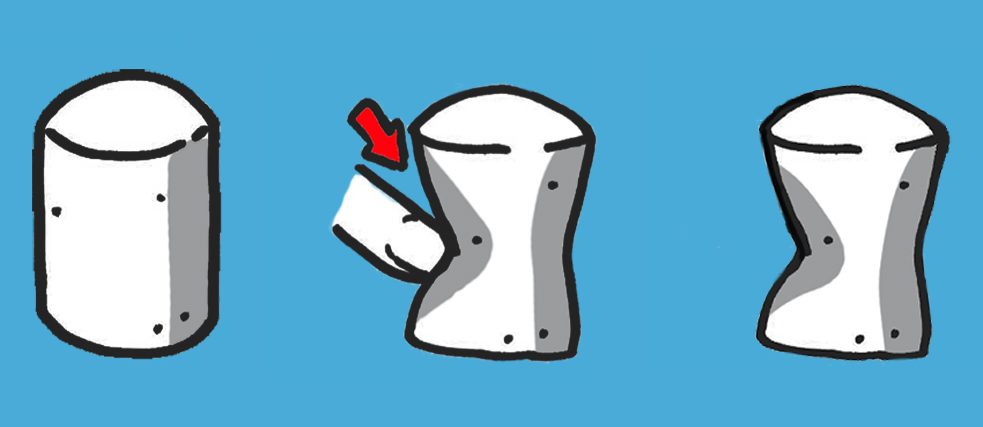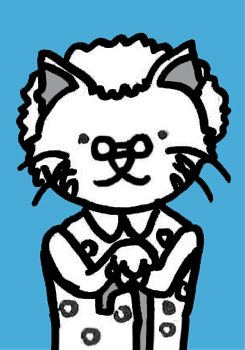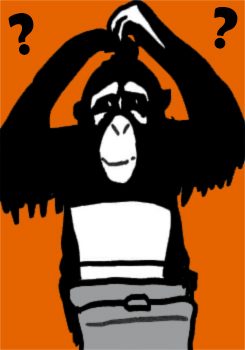Media Theory
What is Information?

What does information have to do with form and how it is created? How is it transmitted? What is the difference between data and information? Why is information not everlasting?
By Andreas Ströhl
Informing
Ever since Plato, the physical world has been thought of in the West as comprising matter that appears in forms. The nearer these phenomena come to the eternally valid yet unattainable idea, the better they are. An actual chair, for example, can approach the idea of perfect “chairness” to a greater or lesser extent, but can never quite achieve it.
When we change the form in which the matter appears (...), we inform the object in question.
The signal-to-noise ratio
According to Gregory Bateson, the smallest unit of information, that is to say a bit, is the smallest difference that makes a difference, e.g. the dot made by a pencil on a blank sheet of paper or a 1 in a series of zeros. In the case of the digital 1, it is clear that it differs from a 0. But how small can the pencil dot be for it to still be perceived as a difference? Of course, the dot cannot really be a dot. As we know, dots have no dimensions. However, the size a stain must be in order to be recognized by the human eye, or the media technologies that have been constructed as reinforcement or prostheses for human sensory organs, is relative. We are unable to see a mark or hear a tone below a certain threshold. This specific ratio is known as the signal-to-noise ratio and can be very easily illustrated using interfaces between the analog world of phenomena and digital binary codes. To what extent do analog phenomena need to set themselves apart from background noise for them to be transformed into a digital signal, e.g. from a 0 into a 1? What does a modem convert, when precisely is a motion sensor activated, and at what point does a scanner detect a dark mark? 27 times one and 29 times zero make the Goethe-Institut.
| ©Zita Ratzenberger
27 times one and 29 times zero make the Goethe-Institut.
| ©Zita Ratzenberger
Information and data
Information is a human quantity and one that is culturally encoded. The Eiffel Tower is more obviously manmade – a symbol, in other words – than some hand axes. And yet the difference between the two is relative and fluid. Information is information only in our human consciousness; aliens might not be able to tell the difference between the Eiffel Tower and a tree or hand axe, or may not even notice it at all. So how can information be conveyed from one consciousness to another? The simple answer is that it cannot. Associations depend on the individual conscience.
| ©Zita Ratzenberger
Associations depend on the individual conscience.
| ©Zita Ratzenberger
Data can be conveyed, not information. In 1948, Claude Shannon and Warren Weaver presented a model for the communication of data between a sender and a receiver. Misleadingly, they called it A Mathematical Theory of Communication, something that communication science and media theory have not recovered from to this day. Nonetheless, the two engineers showed clearly how information is converted into data and sent through a channel to a recipient where it can then be turned back into information. There are two interesting points here: what a recipient does with the received data does not depend solely on the data, and certainly not on the sender’s intention. Rather, it depends on the recipient’s cultural knowledge, interests, prejudices, and experiences to a large extent. Secondly, there is always background noise in the data transmission channels, which means that the data can easily become contaminated by this noise if the signal-to-noise ratio is not large enough.
Hissing in the channels
 Mistakes create the new.
| ©Zita Ratzenberger
It’s a bit like the game Telephone: by the time it reaches the end of the channel, the data has been so distorted by the noise that the information cannot be even roughly reconstructed. When film score composer Alexandre Desplat was presented with his Oscar in 2015, the French nation was touched to learn that Desplat wanted to express particular thanks to “ma grand-mère et mes chats” ("my grandmother and her cats"). In actual fact, Desplat had said in English that he wanted to thank his “Greek mother and Robin Katz”. This is exactly how something new reaches the world: through mistakes and contamination, defective processors and misperceptions.
Mistakes create the new.
| ©Zita Ratzenberger
It’s a bit like the game Telephone: by the time it reaches the end of the channel, the data has been so distorted by the noise that the information cannot be even roughly reconstructed. When film score composer Alexandre Desplat was presented with his Oscar in 2015, the French nation was touched to learn that Desplat wanted to express particular thanks to “ma grand-mère et mes chats” ("my grandmother and her cats"). In actual fact, Desplat had said in English that he wanted to thank his “Greek mother and Robin Katz”. This is exactly how something new reaches the world: through mistakes and contamination, defective processors and misperceptions.We should be grateful for the world’s imperfection, however, as otherwise, it would be static in the dullest way imaginable. Leonard Cohen sang: there’s a crack in everything, that’s how the light gets in.
What is new in the world
 At some point, even this chimpanzee might come up with Divine Comedy.
| ©Zita Ratzenberger
The reason why there can be nothing truly new in the world is that it permits only a finite – albeit very large – amount of information because the elements and possible combinations it contains are limited. There is nothing new under the sun: in a closed system everything is already there and can only be combined in new ways. It is important to remember that data are more than simply meaningless impulses only when their combinations can be arranged into a code. The periodic table of elements, the genetic code, the alphabet, the pentatonic scale, and the pixels on a screen permit only a calculable number of combinations and permutations – or at least they do when there is a framework, that is to say when their carrier medium or time are limited.
At some point, even this chimpanzee might come up with Divine Comedy.
| ©Zita Ratzenberger
The reason why there can be nothing truly new in the world is that it permits only a finite – albeit very large – amount of information because the elements and possible combinations it contains are limited. There is nothing new under the sun: in a closed system everything is already there and can only be combined in new ways. It is important to remember that data are more than simply meaningless impulses only when their combinations can be arranged into a code. The periodic table of elements, the genetic code, the alphabet, the pentatonic scale, and the pixels on a screen permit only a calculable number of combinations and permutations – or at least they do when there is a framework, that is to say when their carrier medium or time are limited.However, it is by no means the case that all conceivable errors have happened, nor has every chromosome as yet mutated, which is why it appears that something new keeps occurring. Yet these are merely necessary coincidences, permutations within a given repertoire. Artistic accomplishment is all about accelerating coincidence and skillfully selecting the permutations. If a thousand monkeys sit typing at a thousand typewriters for a million years, they are bound to end up writing the Divine Comedy. Dante wrote it alone and in less time because he immediately rejected unwanted combinations in the series of permutations.
Entropy
 A burning marshmallow sees an increase in its entropy.
| ©Zita Ratzenberger
Information becomes diminished of its own accord; it expires and becomes erased. A phenomenon known as entropy, this is because information can only be stored physically in the form of data and because order is always lost. Voltage differences or forms of matter strive for equivalence. Some data media lose their information more quickly (e.g. spoken language), while others do more slowly (e.g. the pyramids). Books decay, audio tapes become demagnetized, records become deformed.
A burning marshmallow sees an increase in its entropy.
| ©Zita Ratzenberger
Information becomes diminished of its own accord; it expires and becomes erased. A phenomenon known as entropy, this is because information can only be stored physically in the form of data and because order is always lost. Voltage differences or forms of matter strive for equivalence. Some data media lose their information more quickly (e.g. spoken language), while others do more slowly (e.g. the pyramids). Books decay, audio tapes become demagnetized, records become deformed.Entropy cannot be reduced in a closed system; as a rule, it increases. And this process is virtually impossible to reverse. It is easier to make scrambled eggs out of a chicken’s egg than the other way around. Entropy can be seen as a measure of disorder. Entropy also increases at the level of the universe. It expands, and when it becomes widespread to the point at which no differences whatsoever are evident, no information will be there any longer and time will stop.
Culture, writes Vilém Flusser, can be viewed as “an epicycle that sits upon the linear entropic tendency of nature”. “Ever since Man stretched out his hand towards the world that concerns him […], he has attempted to press information onto his surroundings. His response to heat-death and to death per se is: to inform.“
The author
 ©Goethe-Institut, Mike Morgan
|
Andreas Ströhl is the Regional Director of the Goethe-Institut in North America. He taught Media-Theory at the University of Innsbruck and was the director of the International Munich Filmfestival from 2003 to 2011 and wrote his Ph.D. thesis about the communication philosopher and media theorist Vilém Flusser.
©Goethe-Institut, Mike Morgan
|
Andreas Ströhl is the Regional Director of the Goethe-Institut in North America. He taught Media-Theory at the University of Innsbruck and was the director of the International Munich Filmfestival from 2003 to 2011 and wrote his Ph.D. thesis about the communication philosopher and media theorist Vilém Flusser.